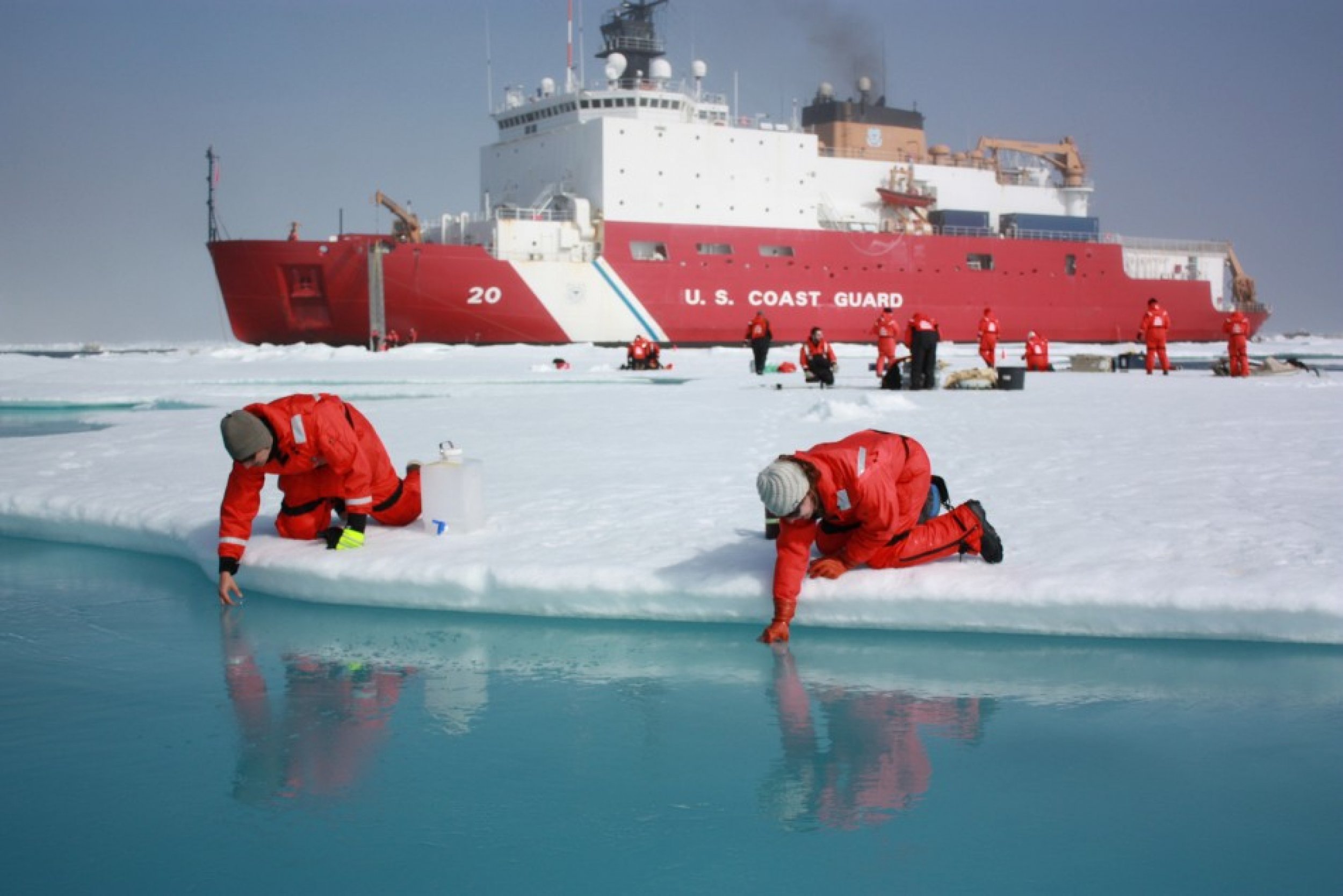New NASA Discovery Reveals Unprecedented Blooms Of Ocean Plant Life Beneath Arctic Ice [PHOTOS & VIDEO]
Not space, but the Arctic Ocean is where NASA has made its latest discovery, which, as it says, is as dramatic and unexpected as finding a rainforest in the middle of a desert.
Thanks to a NASA-sponsored expedition to the Arctic Ocean in the summers of 2010 and 2011, scientists have found an area underneath the sea ice, which is richer in microscopic marine plants, essential to all sea life, than any other ocean region on the Earth.
The expedition, called ICESCAPE (Impacts of Climate on EcoSystems and Chemistry of the Arctic Pacific Environment), explored the waters in the Beaufort and Chukchi seas along Alaska's western and northern coasts using optical technologies. According to scientists, the findings would help reveal a new consequence of the Arctic's warming climate and provide a vital clue to understanding the impacts of a changing climate and environment on the Arctic Ocean and its ecology.
After punching through three-foot thick sea ice, scientists uncovered the single-celled microscopic plants called phytoplankton, which are the base of the marine food chain. Earlier, it was believed that these plants grew in the Arctic Ocean only after the sea ice had retreated in the summer. Now, after the discovery, scientists have come to the conclusion that the thinning Arctic ice is allowing sunlight to reach the waters under the sea ice, catalyzing the plant blooms where they were observed.
If someone had asked me before the expedition whether we would see under-ice blooms, I would have told them it was impossible, said Kevin Arrigo of Stanford University in Stanford, Calif., leader of the ICESCAPE mission and lead author of the study, which was published Thursday in the journal Science. This discovery was a complete surprise.
According to researchers, phytoplankton that consume large amounts of carbon dioxide not only thrives under thick layers of ice, but grows in numbers up to 10 times higher than in the open ocean.
At this point we don't know whether these rich phytoplankton blooms have been happening in the Arctic for a long time and we just haven't observed them before, Arrigo said. These blooms could become more widespread in the future, however, if the Arctic sea ice cover continues to thin.
When we looked under the ice, it was like a photographic negative. Beneath the bare-ice areas that reflect a lot of sunlight, it was dark. Under the melt ponds, it was very bright, said Donald Perovich, a geophysicist with the U.S. Army Cold Regions and Engineering Laboratory in Hanover, N.H., who studied the optical properties of the ice during the ICESCAPE expedition.
The discovery of these previously unknown under-ice blooms also has implications for the broader Arctic ecosystem, including migratory species such as whales and birds, according to the researchers.
Phytoplanktons are eaten by small ocean animals, which are eaten by larger fish and ocean animals. Given that, a change in the timeline of the blooms can cause disruptions for larger animals that feed either on phytoplankton or on the creatures that eat these microorganisms.
It could make it harder and harder for migratory species to time their life cycles to be in the Arctic when the bloom is at its peak, Arrigo said. If their food supply is coming earlier, they might be missing the boat.
Paula Bontempi, NASA's ocean biology and biogeochemistry program manager in Washington, said that the new discovery might have major implications for the global carbon cycle and the ocean's energy balance. According to him, the findings indicate that it's time to revise our understanding of the ecology of the Arctic and the region's role in the Earth system.





© Copyright IBTimes 2024. All rights reserved.






















